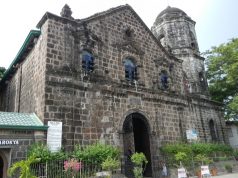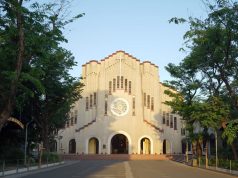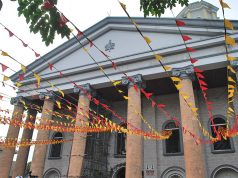The government’s cultural agency has added three Spanish-era churches in Rizal province to its list of national cultural treasures (NCTs).
The new NCTs are Sta. Ursula Parish Church in Binangonan, the Diocesan Shrine and Parish of St. Joseph in Baras, and St. James Parish Church in Morong, along with their associated complexes and ecclesiastical objects.
The Antipolo diocese now has four churches designated as national cultural treasures, including San Ildefonso de Toledo Church in Tanay, which received the designation in 2001.
NCTs are properties with outstanding historical, cultural, and artistic value. This is the highest designation awarded to a site or structure in the country.
Binangonan Church
The Binangonan Church’s original structure was built in the 18th century, with renovations made in 1853.
The church’s original retablos, according to the diocese, are outstanding monumental examples of retablo styles built in 18th and 19th centuries.
Founded as a parish by the Franciscans in 1621, its administration was transferred to the Jesuits in 1679, and then to the Augustinians in 1697. The Franciscans resumed pastoral care of the parish in 1737.
A formal declaration of the church as a national cultural treasure will take place on March 2.
Baras Church
The Baras Church is the oldest Josephian parish on the southern Tagalog mainland.
Originally built in 1595 by Franciscan missionaries, the town and church were relocated to Ibayo in 1636 but returned to their current site in 1682. The present church structure was completed in 1686.
According to the diocese, the church’s original retablo mayor and retablo menores are examples of monumental Baroque-style retablos adapted to the Philippine context.
Various church and government officials are expected to attend the formal declaration of the church as NCT on March 9.
Morong Church
Morong Church was constructed in 1615, shortly after a fire destroyed the first wooden church.
Dedicated to St. James, the church was completed in 1620.
It remained largely unchanged until the early 1850s when Franciscan Fr. Maximo Rico commissioned native Paete craftsman Bartolome Palatino to renovate the facade and build a bell tower.
The diocese said the three churches’ exhibit a “high degree of integrity,” and their ecclesiastical objects also display Philippine adaptations of European, Ibero-American, and Asian artistic styles.







